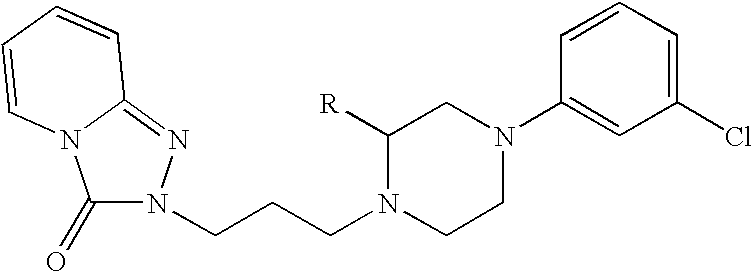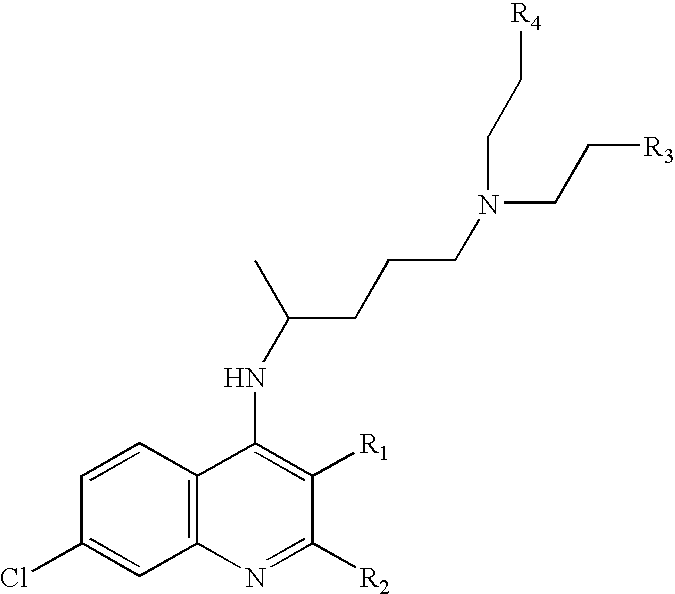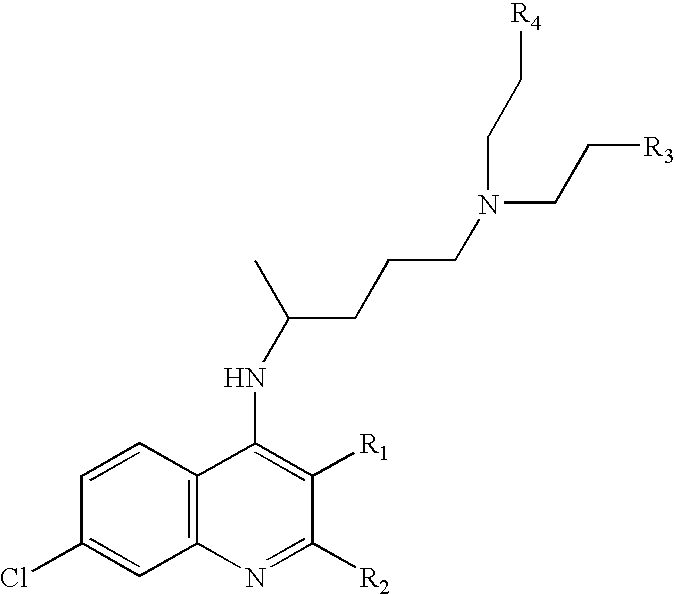Method for treating sleep-related breathing disorders
a breathing disorder and sleep technology, applied in the direction of biocide, heterocyclic compound active ingredients, aerosol delivery, etc., can solve the problems of poor long-term compliance with pap treatment, many patients cannot tolerate the apparatus or pressure, and many patients cannot tolerate treatment, so as to improve the tone of upper airway muscles, improve the effect of deep (slow wave) sleep, and stabilize the respiratory driv
- Summary
- Abstract
- Description
- Claims
- Application Information
AI Technical Summary
Benefits of technology
Problems solved by technology
Method used
Image
Examples
example
[0311] Example 1
[0312] Protocol for Determining the Effects of Mirtazapine and Zonisamide on Upper Airway Tone in Rats. The effects of mirtazapine and zonisamide on upper airway muscle tone during sleep are assessed in a rat model to evaluate the potential efficacy of these agents in humans. Mirtazapine and zonisamide, alone and in combination, are given to conscious adult rats and their sleep related behavior is recorded for four to six hours. To record sleep related activity, the animals have skull electrodes and respiratory muscle activity electrodes implanted. Electrode instrumentation takes place while the animals are anesthetized. Instrumentation includes an incision on the top of the head to expose the skull and the placement of three small screws into the top of the skull. Electroencephalography (EEG) electrodes are attached to the screws for determination of sleep stages. In addition, a total of three pairs of thin, flexible, wire electrodes for measuring electromyography ...
example 2
[0315] Mirtazapine Monotherapy. A proof-of-concept study is designed to demonstrate the effects of mirtazapine on obstructive sleep apnea (OSA). The study includes dosing at multiple dosage levels over a period of time. In particular, the study is a six week single-blind cross-over design study in patients who have been diagnosed with OSA. The study patients must have an Apnoea-Hypopnoea Index (AHI) of between 10 and 40, an age of at least 21 years, and a calculated body mass index (BMI) equal to or less than 40 at the time of study entry. The patients are randomly assigned to one of six dose-sequence groups in a ratio of 1:1:1:1:1:1. Thus, the total number of patients is 42—six in each dose-sequence group; those who terminate early from the study are replaced.
[0316] The criteria for inclusion in the study are as follows: (1) Patients must be capable of giving informed consent; (2) Patients must have an AHI of 10-40; (3) Patients must be at least 21 years of age; (4) Each patient m...
example 3
Mirtazapine and Zonisamide Combination Therapy
[0365] A proof-of-concept study is designed to demonstrate the effects of mirtazapine on obstructive sleep apnea (OSA) when used in combination with zonisamide. The study includes dosing with mirtazapine alone, with placebo and with mirtazapine plus zonisamide. In particular, the study is a four week single-blind, randomized study in patients who have been diagnosed with OSA. The study patients must have an Apnoea-Hypopnoea Index (AHI) of between 10 and 40, an age of at least 21 years, and a calculated body mass index (BMI) equal to or less than 34 at the time of study entry. The patients are randomly assigned to one of three dosing regimens in ratio of 2:1:1. Thus, the total number of patients is 80-40 to receive mirtazapine alone, 20 to receive placebo and 20 to receive mirtazapine and zonisamide. In each dosing group, those who terminate early from the study are replaced.
[0366] The criteria for inclusion in the study are: (1) Patien...
PUM
| Property | Measurement | Unit |
|---|---|---|
| Time | aaaaa | aaaaa |
| Time | aaaaa | aaaaa |
| Therapeutic | aaaaa | aaaaa |
Abstract
Description
Claims
Application Information
 Login to View More
Login to View More - R&D
- Intellectual Property
- Life Sciences
- Materials
- Tech Scout
- Unparalleled Data Quality
- Higher Quality Content
- 60% Fewer Hallucinations
Browse by: Latest US Patents, China's latest patents, Technical Efficacy Thesaurus, Application Domain, Technology Topic, Popular Technical Reports.
© 2025 PatSnap. All rights reserved.Legal|Privacy policy|Modern Slavery Act Transparency Statement|Sitemap|About US| Contact US: help@patsnap.com



